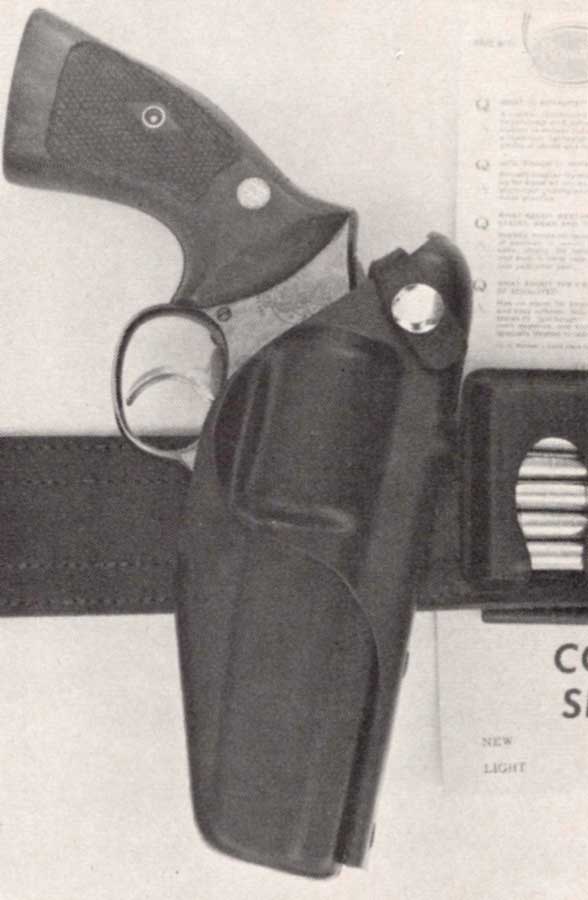Way back in 1965, there was a company called JC &G Limited. Started by Jack Couper, a cop and entrepreneur, the company made a revolutionary new duty holster.
At that time, nearly every police duty rig was made of leather. Couper, on the other hand, developed a rig made of thermoplastic. While not as robust as today’s Kydex, thermoplastic was one of the tougher materials of the time.

Here’s a look at the rig from Duke Rogers in September of 1965.
New JC&G Holsters
Among new items on the market is a complete line of revolutionary holsters, cartridge dispensers, cuff case and other equipment necessary to a police officer before he can strap on his belt. The products are manufactured by the JC & G, Ltd. of Denver, Colorado, whose president Jack Couper, has had thirteen years of police experience.
According to Couper, the holster was designed after five years of study to find a way to build a holster that would have safety, comfort, speed, durability and afford the officer full control of the weapon at all times. The result is called the Combat Special and is quite unique in design and versatility.
The Combat Special Holster
The holster is made of Royalite thermoplastic which should make it about as rugged and durable as anyone could ask. In case this is a new term to you I believe that you can sample the material in most luggage stores, jet aircraft interiors, some new car dashes, football helmets and typewriter cases.
The Combat Special holster can be used in either the conventional manner or as a cross draw. The belt loop is adjustable to fit almost any size belt so it can be used for both uniform or plain clothes wear. One of the best features is the number of guns that it will accommodate. The model that I have is for an S&W Combat magnum, Combat Masterpiece, or Military and Police and I find that it also handles any of the Colt revolvers that I have tried in it.
When worn in a conventional manner, drawing the gun places the officer in the proper position for hip shooting. It also demonstrates how the gun can be drawn with the opposite hand from behind the back. In drawing from this holster, the motion is down and back. The design resembles a clamshell holster built inside of a crossdraw holster, and when the gun is drawn, the clamshell comes out of the crossdraw to open. It looks quite different but works well. It is also easy to replace with one hand, as the clamshell portion closes upon entering the crossbow portion.
Sounds: Good or Bad?
I found one other feature about the holster and I will leave it up to you to decide if it is good or bad. At night, in a quiet area, I think you could hear the gun being drawn for a considerable distance unless one had time to ease it out with two hands. This could have the psychological effect of the racking of a shotgun or it could be a giveaway of your position, depending upon the circumstances.
The material has a grain finish resembling leather and seems durable enough to be handed down from generation to generation. The cost of the holster is $10.95 to $13.95, depending upon what size gun you carry.
The cuff case should eliminate the problem that we all have after a few years when they become soft and lose their shape and looks. It also has the advantage of not having a snap-down flap and still can be worn upside down without the handcuffs falling out. If you ever need your cuffs in a hurry then this is the case for you.
The cartridge dispensers are another feature. They also fit on the belt upside down but with nothing to unsnap or tip to get the cartridges out. You can remove cartridges one at a time or all at once, and if you only take one or two, you don’t have to worry about the rest falling out.